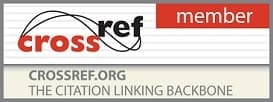- Printed Journal
- Indexed Journal
- Refereed Journal
- Peer Reviewed Journal
P-ISSN: 2394-1685 | E-ISSN: 2394-1693 | CODEN: IJPEJB
Impact Factor (RJIF): 5.38
2017, Vol. 4, Issue 3, Part C
Exercise physiology
Author(s): Sudharani P, Manjulatha C and Raju DVSN
Abstract:
The way in which our body responds to physical exercise can be explained through ‘Exercise Physiology’, a branch of biological sciences. The dietary carbohydrates in the digestive track will get broken down into glucose and converted to ATP (Adenosine Triphosphate) in the cells, which is the energy currency to our body. Whatever glucose the cells don’t need immediately for energy, store in the liver and muscles as glycogen. Likewise, excess proteins and fats through our food store as triglycerides, until our body needs a backup energy source, necessary for physical exercise. The aim of the present review is to look over the reduction process of stored fat during exercise. The two main sources of energy for muscular exercise are carbohydrates (glycogen and glucose) and fats (triglycerides). Approximately 100 k. cal. of energy are expended per mile of walking. Continuous physical exercise for about 20 minutes, first mobilizes the stored glycogen from liver in a cyclic manner by oxidizing it in the cells to get ATP needed for muscular contractions. As exercise progresses from low to moderate intensity, our body will switch on to oxidize fat from stored triglycerides. Frequently exercised muscle tissue is in a constant state of remodeling, leading to increase in endurance, strength, flexibility and power.
Pages: 126-128 | 1295 Views 108 Downloads
Download Full Article: Click Here

How to cite this article:
Sudharani P, Manjulatha C, Raju DVSN. Exercise physiology. Int J Phys Educ Sports Health 2017;4(3):126-128.








 Research Journals
Research Journals